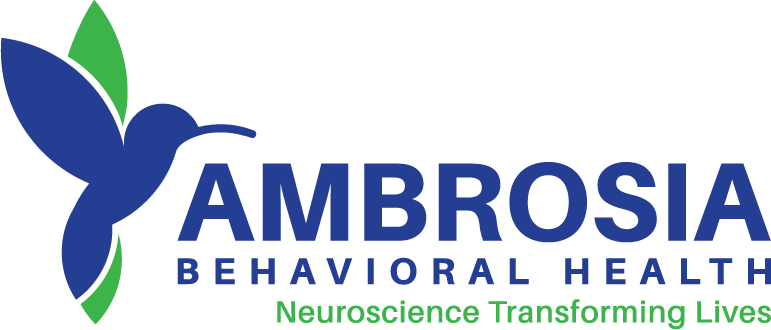Mood disorders, such as depression and bipolar disorder, directly affect nearly 21 million people across the United States. Of course everyone experiences moodiness from time to time, but having a mood disorder is much different than feeling grumpy because you didn’t get enough sleep. Mood disorders usually occur because there is an imbalance in the chemicals in the brain that help support a healthy mood. Dopamine, norepinephrine, and serotonin are the main neurotransmitters that are impacted when a mood disorder is present. The levels of these neurotransmitters tend to be off, causing the symptoms most commonly seen in mood disorders like bipolar disorder and major depressive disorder. While the majority of mood disorders are biological, there are some instances where a mood disorder develops as a result of something else, such as drugs or alcohol. That type of mood disorder is known as a substance-induced mood disorder.
What is a Substance-Induced Mood Disorder?
A substance-induced mood disorder is not a condition that develops on its own. Instead, an individual must be abusing drugs or alcohol to develop this particular condition. This makes substance-induced mood disorders different from that of other co-occurring conditions, as it is not a disorder that can exist without the abuse of mind-altering substances.
When someone has a substance-induced mood disorder, they are likely to begin displaying a number of symptoms. Some of the most common symptoms related to substance-induced mood disorders can include, but are not limited to, the following:
- Pervasive sadness and/or hopelessness
- Feeling “empty”
- Changes in weight that include dramatic weight gain or loss in a short amount of time
- Unhealthy sleep patterns, such as sleeping too much or too little
- Lowered libido
- Frequent fatigue and low energy level
- Difficulty concentrating
- Feeling agitated or irritated
- Thoughts of death, including suicidal thoughts
For someone to be diagnosed with a substance-use disorder, these symptoms must be occurring while a mind-altering substance is being abused or during the withdrawal phase.
Why Does a Substance-Induced Mood Disorder Occur?
Substance-induced mood disorders occur in nearly one-third of the nearly 21 million Americans who are addicted to drugs or alcohol. The National Institutes of Health (NIH) report that these types of mood disorders result as a “physiological consequence” of drug and alcohol abuse. This means that as an individual is abusing drugs or alcohol, their mind and body are being impacted in such ways that these mood disorders develop.
Substance-induced mood disorders create a dangerous cycle of continued substance abuse that can result in death. It is no secret that the vast majority of individuals who abuse drugs or alcohol do so in an effort to self-medicate their own personal feelings. Those who have depression, anxiety, personality disorders, etc. are at greater risk for developing a substance use disorder because of the symptoms they experience on a regular basis. These symptoms can erode at their reserve, making substance abuse seem like an easy way to silence them. When individuals in this particular situation abuse drugs or alcohol, they are at increased risk for worsening of their symptoms of mental health issues that are already occurring, including mood disorders. But, just as there are many people who go into substance abuse with a mental health condition already occurring, there are many who do not.
There are several individuals who find themselves abusing drugs and alcohol who begin to develop symptoms indicative of a mood disorder. As they continue to use, these symptoms become more pronounced and can start to interfere with their daily lives. Unfortunately, there is a major catch-22 that occurs when this happens. Individuals become more likely to abuse more drugs or alcohol to self-medicate the substance-induced mood disorder symptoms they are experiencing. This sadly does not do anything but maybe help the user to detach from their mental and emotional state for a short period of time.
How are Substance-Induced Mood Disorders Treated?
The best and most effective way to treat a substance-induced mood disorder is to stop abusing drugs or alcohol. This tends to be the most difficult part for anyone who is addicted to mind-altering substances, which is why it can be extremely helpful to detox in a professional facility. When a substance-induced mood disorder is occurring, there is a likelihood that during detox, individuals may experience further complications. These complications can include more severe thoughts of suicide and hopelessness, which only work against the goal of getting sober.
After detoxing from drugs or alcohol, individuals with substance-induced mood disorders may notice relief from their symptoms, while others may still grapple with them. This is because the disease of alcohol changes the physical structure of the brain, creating issues in areas that are supposed to manage emotional responses, mood regulation, etc. Therefore, once free and clear of mind-altering substances, individuals can participate in evidence-based therapies that include cognitive behavioral therapy, individual therapy, group counseling, and more.
Drug Rehab in South Florida
If you are struggling with a substance use disorder and are in need of help, reach out to us at Neuroscience Institute in South Florida. Our team of professionals can not only help you get sober, but also help address any mental health concerns you are experiencing.
Do not wait. Contact us today.




